How To
Improv Sewing
Every so often, we receive cookbooks and crafting books to review, and it’s always a good day in the office when that happens. One book in particular caught my eye: Improv Sewing by Nicole Blum and Debra Immergut. I’m an enthusiastic but not terribly skilled sewer and the book was right up my alley, showing […]
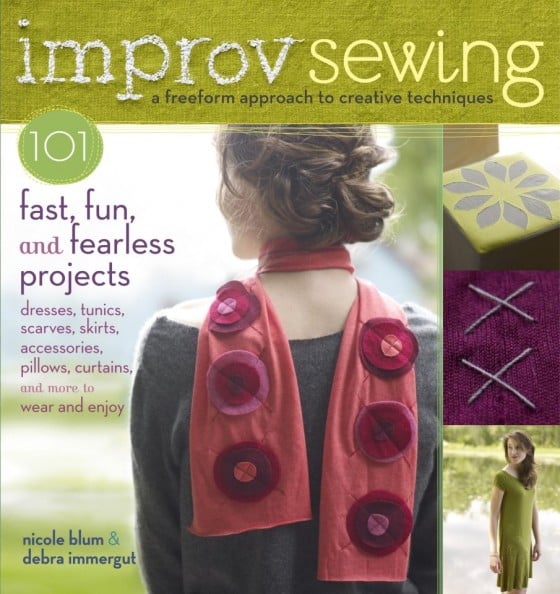 I’m an enthusiastic but not terribly skilled sewer and the book was right up my alley, showing you the many projects (dresses, skirts, accessories, pillows, curtains, etc.) you can complete with just a few basic skills. The style is loose and relaxed. I set it aside for a quiet day.
A few days later, I was at the Northampton, MA Farmer’s Market and came across a booth for Carr’s Ciderhouse, a new cidery in nearby Hadley. I’m a big fan of cider and all things apple, so I tried a sample, which was dry, crisp, and delicious, and began chatting with the woman working the booth. I showed her my apple book and after a bit more conversation she modestly said, “I actually have a book coming out right now. It’s called Improv Sewing.” Holy coincidence! I was talking to Nicole Blum, whose husband, Jonathan Carr, is a farmer and cider maker. Nicole pointed out that the beautiful table runner on her table, appliqued with apples and cider bottles, is in the book.
I’m an enthusiastic but not terribly skilled sewer and the book was right up my alley, showing you the many projects (dresses, skirts, accessories, pillows, curtains, etc.) you can complete with just a few basic skills. The style is loose and relaxed. I set it aside for a quiet day.
A few days later, I was at the Northampton, MA Farmer’s Market and came across a booth for Carr’s Ciderhouse, a new cidery in nearby Hadley. I’m a big fan of cider and all things apple, so I tried a sample, which was dry, crisp, and delicious, and began chatting with the woman working the booth. I showed her my apple book and after a bit more conversation she modestly said, “I actually have a book coming out right now. It’s called Improv Sewing.” Holy coincidence! I was talking to Nicole Blum, whose husband, Jonathan Carr, is a farmer and cider maker. Nicole pointed out that the beautiful table runner on her table, appliqued with apples and cider bottles, is in the book.

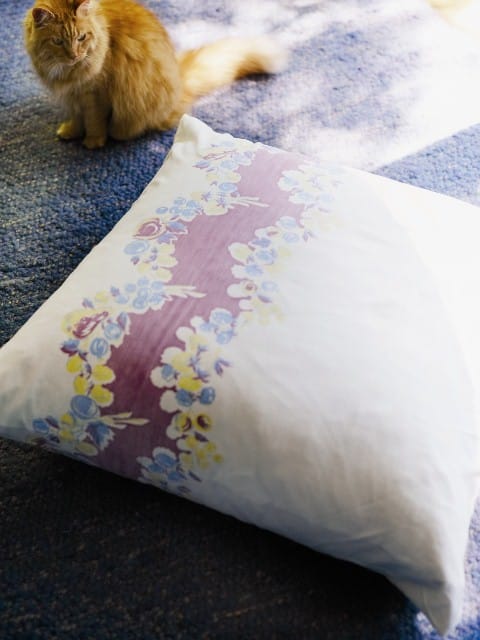
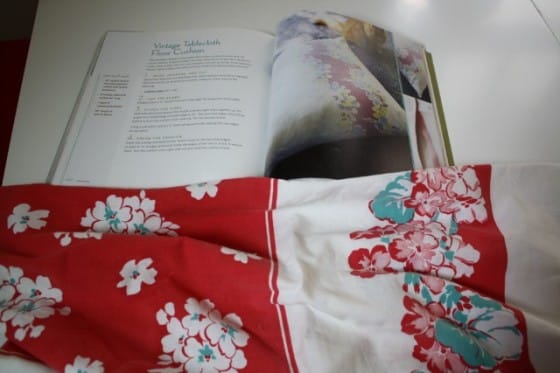 Per the book’s instructions, I played around with the cloth to figure out which section would work best with my pillow. And true to the spirit of the book, I adapted the basic design to suit the smaller pillow that I happened to have on hand.
I cut the tablecloth in half. Eventually I’ll use the other piece for a matching pillow.
Per the book’s instructions, I played around with the cloth to figure out which section would work best with my pillow. And true to the spirit of the book, I adapted the basic design to suit the smaller pillow that I happened to have on hand.
I cut the tablecloth in half. Eventually I’ll use the other piece for a matching pillow.
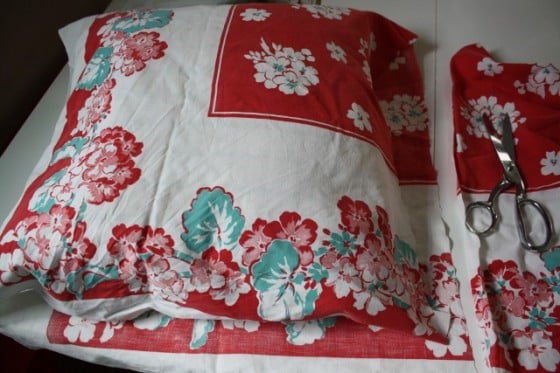 Double hems neatly tucked away the cut edge of the fabric.
Double hems neatly tucked away the cut edge of the fabric.
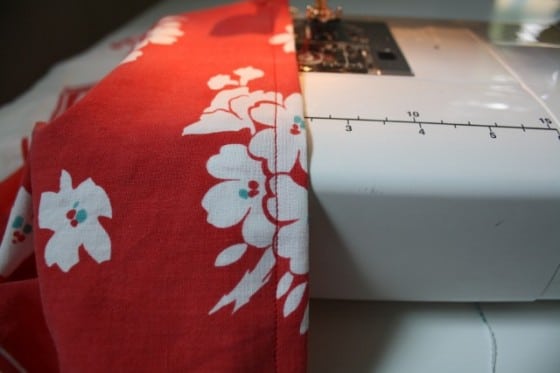 The back of the pillow has an envelope-style closure fastened with Velcro. I tried to get the pattern to line up as best I could and pinned where the seams needed to be.
The back of the pillow has an envelope-style closure fastened with Velcro. I tried to get the pattern to line up as best I could and pinned where the seams needed to be.
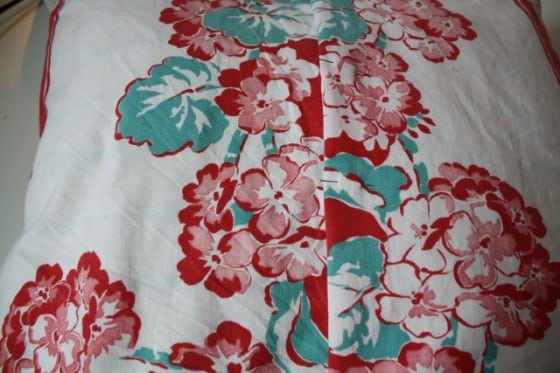 Then it was time turn the fabric inside-out and sew up the sides and add the Velcro.
Then it was time turn the fabric inside-out and sew up the sides and add the Velcro.
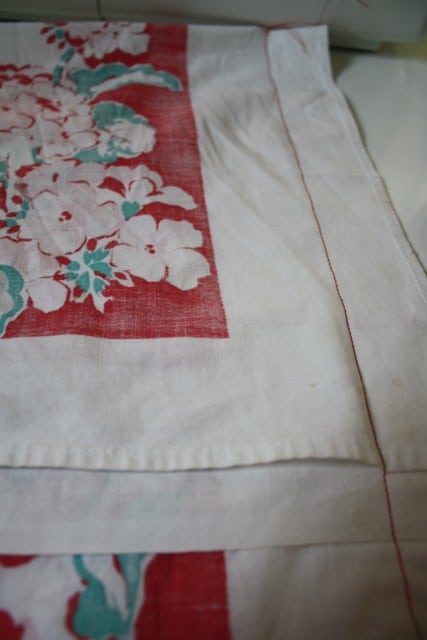 The end result is simple and pretty, and finally allows me to enjoy a fabric that has been hidden away in a cabinet. Thanks, Nicole and Debra!
The end result is simple and pretty, and finally allows me to enjoy a fabric that has been hidden away in a cabinet. Thanks, Nicole and Debra!
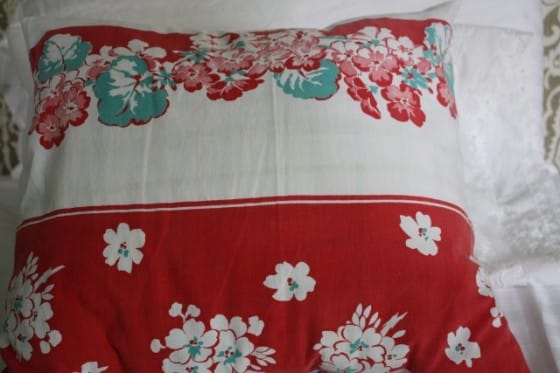
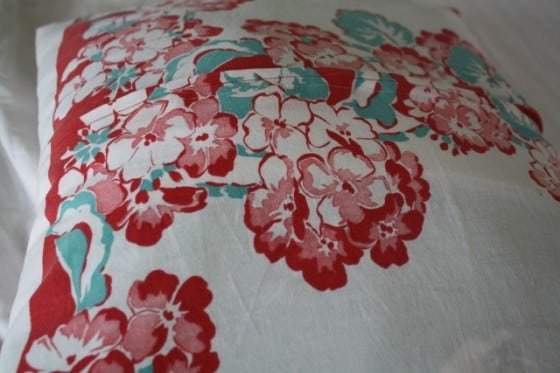






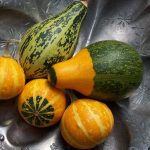

Holy coincidence, indeed — and what a great craft project!
This is so pretty!
Wow, what a lovely pillow! Thanks, Amy, for the kind words about our book, and hope you’ll try lots of other projects from its pages. And can I just say that I’m a huge fan of Yankee? I moved to New England with my family seven years ago, and your magazine has helped us discover its treasures and learn about its history. Great recipes too. So thanks for that too!
Love this, Amy! Makes me want to go back to Brimfield and buy a whole mess of tablecloths now that I know I can make pretty pillows out of them.
I LOVE that fabric, Amy, and am so happy that you got your machine out and made it because of the book. We love your book around here and it is on the coffee table currently. Cheers!